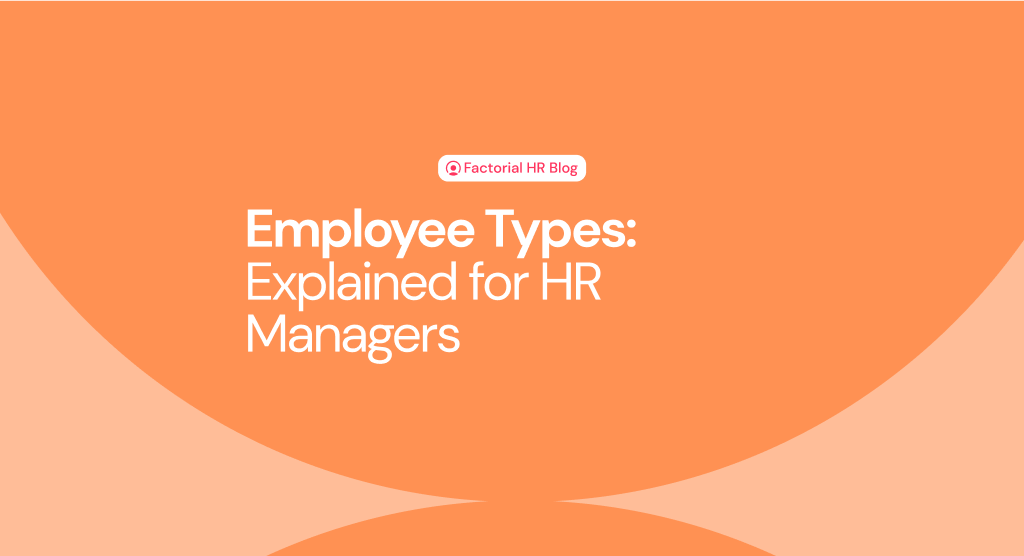Operational efficiency is essential for achieving your goals, staying competitive, and thriving in today’s fast-paced business environment. The more efficiently your business runs, the more effectively you will utilize resources, improve productivity, reduce costs, enhance customer satisfaction, and ultimately achieve profitability and long-term success.
Is your business efficient? Do you know how to increase operational efficiency?
In today’s post, we will explore a range of valuable tools and practical tips to help you streamline your processes, enhance productivity, and drive performance within your organization. Whether you’re a small startup or a large company, this guide will provide you with actionable strategies to improve operational efficiency and unlock the full potential of your business.
- What is operational efficiency?
- Factors that influence operational efficiency
- How to measure operational efficiency
- How to improve operational efficiency
- Operational efficiency examples
- Using technology to boost operational efficiency and effectiveness
- Explore Factorial’s tools for building an efficient workforce
What is operational efficiency?
Let’s start with a basic operational efficiency definition.
Operational efficiency refers to the ability of an organization to optimize its internal processes, resources, and systems to achieve maximum productivity and output while minimizing costs. It involves streamlining workflows, eliminating bottlenecks, and making effective use of available resources to deliver goods or services in the most efficient and effective way possible.
Organizational efficiency takes into account a number of aspects relating to a company’s business operations. This includes process optimization, resource management, people operations, workforce productivity, supply chain management, technology, and overall performance.
Why is measuring operational efficiency so important?
So why should business managers regularly measure operational efficiency?
Measuring operational efficiency is essential for several reasons. Firstly, it allows you to identify areas of improvement and optimize your operations. For example, you might detect that a specific team or individual has an overly high workload that is affecting their productivity. By restructuring the workforce and redistributing tasks, you can make sure that work is shared more fairly among team members. This, in turn, could help your teams work more efficiently, reduce bottlenecks, lower costs, and increase productivity.
Moreover, measuring operational efficiency provides you with valuable insights into your performance and helps you make data-driven decisions. You can compare your output against competitors and industry benchmarks and set long-term benchmarks for improvement. Not only that, but tracking key efficiency metrics makes it easier to identify trends, patterns, and potential bottlenecks early on. That way, you can implement corrective measures and avoid potential issues before they become a problem.
Measuring operational efficiency also helps you better allocate your resources. You get a deeper understanding of how your business is using its resources, including labor, equipment, and, most importantly, your human resources. You can then make data-driven decisions to optimize resource allocation and maximize productivity.
Finally, keeping track of your operational efficiency helps you promote a culture of continuous improvement within your organization. It encourages your workforce to focus on identifying and implementing process enhancements, fostering innovation, and increasing competitiveness. As a result, you can easily adapt to changing market conditions, improve customer satisfaction, and achieve sustainable growth.
Factors that influence operational efficiency
Running an efficient business is about much more than simply cutting costs in order to make a profit. In fact, pretty much every aspect of your business affects your level of efficiency.
Here are a few key factors that can significantly influence operational efficiency within an organization:
- Human factors. The knowledge, skills, motivation, and engagement of employees play a crucial role in operational efficiency. Hiring and retaining talented individuals, providing training and development opportunities, fostering a positive work culture, and promoting effective communication and teamwork all contribute to improved operational performance.
- Organizational factors. Effective organizational structures, clear roles and responsibilities, efficient decision-making processes, streamlined workflows, and a focus on process improvement are vital for operational efficiency. A well-designed and coordinated organization ensures that resources are allocated effectively, tasks are executed smoothly, and operational goals are aligned with overall strategic objectives.
- Technological factors. The adoption and utilization of appropriate technologies can greatly enhance operational efficiency. Automation, digital tools, data analytics, and integrated systems enable streamlined processes, improved data management, faster communication, and real-time monitoring. Embracing technology can optimize resource allocation, reduce human error, and facilitate data-driven decision-making.
How to measure operational efficiency
Before you can improve operational efficiency, you first need to know where you stand. In other words, you need to identify the current state of your organization’s operations. This involves conducting a comprehensive assessment of various aspects of your business. This will usually include your internal processes, workflows, resource allocation strategies, performance metrics, and employee engagement levels. By gaining a clear understanding of your organization’s strengths and weaknesses in this way, you can identify areas for improvement and develop targeted strategies to enhance overall efficiency.
So how can you measure operational efficiency?
While there is no universal method for measuring a company’s operational efficiency, you can use a basic metric to understand your operating efficiency ratio.
Let’s explore this operating efficiency metric.
Operational efficiency metric
When it comes to measuring operational efficiency, many companies make the mistake of focusing solely on inputs, such as costs, headcount reports, and hours worked. However, this approach doesn’t give you a complete picture.
Why?
Because you also need to evaluate the input-to-output ratio of your company’s processes. That way, you will gain more insight into what you’re putting into the business vs. the return on your investment. In other words, how efficient and effective your internal operations are.
Although specific performance indicators vary by industry, here are a few common examples to give you an idea.
Operating input:
- Operating expenses (OPEX). This might include sales and administrative costs, salaries and wages, office supplies, and system and machine maintenance.
- Cost of goods sold (COGS). Often includes direct labor and material costs, equipment maintenance and repair expenses, and staff salaries.
- Human resources: workforce size and hours worked.
Generated output:
- Revenue
- Customer numbers
- Product or service quality
- Business growth
- Customer satisfaction
- Net sales (gross sales minus returns, allowances, and discounts)
The goal is for your generated output to exceed your operating input.
You can also use the following operating efficiency formula to calculate your ratio:
(Operating expenses + Cost of goods sold) ÷ Net sales = Operational efficiency ratio
The lower your input-to-output ratio is, the easier it is to efficiently generate revenue. Provided you are offering something of value, of course.
Ultimately, by regularly tracking this data with an operational efficiency report, you can get a clearer picture of how effective your internal operations are and how well your team manages its workload. You should also track additional operational efficiency metrics, such as average turnaround time, to identify any performance bottlenecks or areas for improvement.
How to improve operational efficiency
Now that we’ve seen what the concept means, let’s explore a few strategies to help you improve operational efficiency in your organization. It’s a good idea to include these strategies in your HR checklist.
Conduct a current state assessment
A current state assessment is a thorough evaluation of your existing processes, workflows, and resource allocation. It helps you understand your operational strengths, weaknesses, and areas for improvement. You can then use these insights to guide decision-making, streamline processes, and enhance overall operational efficiency.
Start by closely examining how tasks and activities are currently performed. How efficiently does each process in your business work? Are there any bottlenecks or obvious areas of inefficiency? For example, are any of your employees undertaking unnecessary manual tasks? Are any of your internal processes redundant? Have employees reported any problematic communication gaps?
The more you understand the current state of your operations, the easier it will be to identify and develop targeted strategies to enhance your processes.
Address bottlenecks
The next step is addressing any bottlenecks that you identified in your current state analysis. This is a critical aspect of improving operational efficiency. Look out for any areas within your processes where inefficiencies disrupt the flow of your business operations.
For example, are there any hiring delays causing staffing issues that might result in employee stress, burnout, and decreased productivity? If so, could this bottleneck be addressed by automating part of the hiring and onboarding process?
Develop an action plan
Developing an action plan is another critical step that will help you improve operational efficiency. Essentially, this stage involves creating a roadmap for improvement based on your current state assessment and identified bottlenecks.
For example, you could automate payroll calculations and deductions to optimize your employee benefits and payroll processes. Or you could target potential bottlenecks in your accounting department by using software and standardized reporting templates to improve financial reporting.
Above all, make sure your action plan outlines specific objectives, sets clear timelines, assigns responsibilities, and defines actionable steps to address identified areas of improvement. By developing a well-structured action plan in this way, you can ensure that your strategies for improvement are organized, focused, and effectively executed.
Establish key performance indicators
Your action plan should also include key performance indicators (KPIs). KPIs are measurable targets that align with your organizational goals and help you track your progress toward your defined efficiency objectives. Examples include task cycle time, customer satisfaction ratings, inventory turnover, and employee performance benchmarks.
Make sure you regularly review and analyze your established KPIs to understand the impact of any process changes and guide further improvement efforts.
Maintain consistent procedures
Maintaining consistent procedures is crucial for sustaining operational efficiency. To this effect, make sure you establish standardized processes and procedures to ensure consistency across all your teams and departments. Documenting and sharing established guidelines, workflows, and best practices in this way will help your employees work more efficiently.
A good tool for this is using a reliable document management system. The right platform can also make it easy to train and onboard new employees so that they can quickly understand your established procedures. You should also regularly review and update your procedures so that they are relevant and aligned with your evolving business needs.
Invest in employee training
Offering all your employee learning and development opportunities will help them enhance their skills, knowledge, and capabilities. As a result, they will be able to perform their tasks more effectively and efficiently. Well-trained employees are also more equipped to adapt to changes, handle complex tasks, and contribute to process improvements.
Create a culture of continuous improvement
Continuous improvement is a key driver of operational efficiency. As a result, you should strive to foster a culture that encourages employees to actively seek opportunities for development. This involves promoting a mindset of innovation, collaboration, and learning.
So, what does this mean in practice?
Essentially, the best way to build a culture of continuous improvement is by regularly seeking employee feedback, conducting performance reviews, and encouraging employee participation. You also need to nurture a culture where employees feel valued, supported, and empowered. By nurturing a positive and inclusive culture in this way, your organization can attract and retain top talent, boost employee morale, and create a supportive environment where employees are motivated to contribute their best efforts. And this is one of the foundations of operational excellence and organizational success.
Automation and digital technologies
The final suggestion in this guide relates to automation and digital technology.
To ensure operational efficiency, organizations have the option to outsource their HR processes. However, this approach often comes with a price tag. A more cost-effective and beneficial alternative, especially for small businesses with limited budgets, is to leverage tools and technology to automate processes internally.
With the right automation technology, you can streamline many of your operations, reduce errors, optimize resource utilization, and enhance overall productivity. For example, you can use software to enhance your analytics and reporting capabilities, streamline your performance management processes, and automate your employee time-tracking system. As a result, you can minimize time-consuming tasks and focus your resources on more strategic activities, ultimately driving overall operational efficiency and success.
Operational efficiency examples
Operational efficiency means different things in different industries. For example, it’s one thing understanding how to improve operational efficiency in manufacturing, but tackling operational inefficiency in the service sector requires a very different approach.
Let’s explore a few operational efficiency examples to demonstrate how this practice can benefit organizations operating in different industries.
Manufacturing industry:
- Implementing lean manufacturing principles to minimize waste, reduce inventory levels, and optimize production processes.
- Using automated production lines and robotics to improve speed, accuracy, and consistency.
- Utilizing predictive maintenance to minimize equipment downtime and optimize maintenance schedules.
Retail industry:
- Optimizing inventory management systems to ensure optimal stock levels, minimize stockouts, and reduce holding costs.
- Implementing efficient store layouts and supply chain management strategies to minimize handling and transportation costs.
- Using data analytics to forecast demand accurately and improve demand planning.
Healthcare industry:
- Enhancing electronic health record systems to improve information sharing and reduce administrative tasks.
- Implementing automated prescription filling systems to improve accuracy and reduce wait times.
- Optimizing patient flow management to reduce waiting lists and improve resource utilization.
Service industry:
- Using customer relationship management (CRM) systems to personalize services and improve customer satisfaction.
- Automating back-office processes, such as invoice processing or account reconciliation, to increase efficiency and accuracy.
- Implementing workflow management systems to improve task allocation, communication, and collaboration.
These examples demonstrate how operational efficiency can be achieved by leveraging technology, optimizing processes, and focusing on quality, customer satisfaction, and cost-effectiveness.
Using technology to boost operational efficiency and effectiveness
Perhaps the most effective strategy for boosting operational efficiency is making sure you use the right technology to automate your internal processes, improve your access to data, enhance collaboration, measure performance, and streamline your operations.
Factorial offers a range of features that can significantly enhance your ability to achieve operational efficiency:
- Time and attendance tracking. This feature helps you efficiently manage employee attendance, leave, and absences. Automated tracking also reduces errors, improves accuracy, and simplifies payroll processing, saving you valuable time and minimizing administrative work for your team.
- Analytics and reporting. Factorial offers robust analytics and reporting capabilities, allowing organizations to gain valuable insights into their HR metrics. From employee turnover rates to time-off trends and workforce demographics, these automated analytics help you identify areas for improvement and make data-driven decisions to optimize operations and resource allocation.
- Employee portal. Your workforce can directly access an employee portal to self-manage many of their own HR-related tasks. This includes requesting time off, updating personal information, submitting employee feedback, and accessing payslips. As a result, your HR team has more time to focus on more strategic initiatives.
- Onboarding and offboarding. Factorial’s onboarding and offboarding features streamline the processes of welcoming new employees and managing employee departures. By automating these workflows, you can ensure a smooth transition, minimize paperwork, and maintain compliance with HR regulations.
- Document management. The platform’s document management feature allows you to digitally centralize and organize all your important HR documents. As a result, your HR team can easily access and manage employee files, contracts, policies, and other critical documents.
- Performance management. You can use Factorial’s performance management module to continuously monitor employee performance, set performance goals, and exchange feedback. As a result, you can easily improve productivity, boost employee engagement, and nurture overall operational efficiency.










